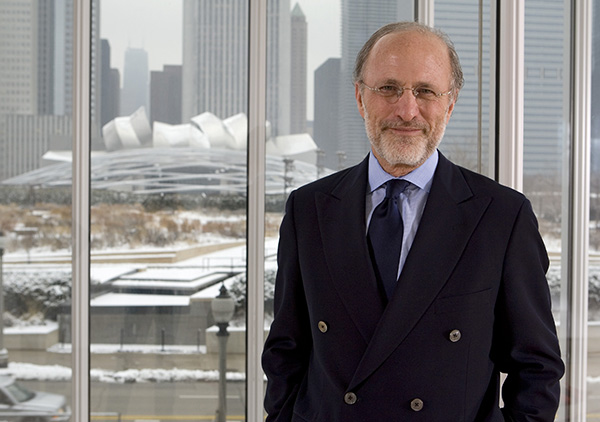
President of the J. Paul Getty Trust, James Cuno, published an extensive article on the state of repatriation efforts worldwide in Foreign Affairs‘ November-December issue (read the full article here). In it, he advocates expressly against the repatriation of artifacts from so-called encyclopedic museums, whose collections have benefited from the history of colonialism and which are increasingly under fire for holding onto those artifacts.
Beginning his deconstruction of the rationales that sometimes motivate repatriation efforts, Cuno cites a UNESCO declaration stating that “no culture is a hermetically sealed entity.” He then points to the consistent use of nationalistic rhetoric behind repatriation claims for artifacts, which he says go directly against the existence and potential for cross-cultural dialogue presented by encyclopedic museums such as the Metropolitan Museum in New York, and the British Museum in London:
Many use ancient cultural objects to affirm continuity with a glorious and powerful past as a way of burnishing their modern political image—Egypt with the Pharaonic era, Iran with ancient Persia, Italy with the Roman Empire. These arguments amount to protectionist claims on culture. Rather than acknowledge that culture is in a state of constant flux, modern governments present it as standing still, in order to use cultural objects to promote their own states’ national identities. […] In an era of globalization that is nonetheless marked by resurgent nationalism and sectarianism, antiquities and their history should not be used to stoke such narrow identities. Instead, they should express the guiding principles of the world’s great museums.
According to Cuno, encyclopedic museums are in fact more representative of contemporary reality than those focused on promoting nationhood. The latter can produce dangerous levels of xenophobia, while museums like the Met, because of their holdings of artifacts from numerous cultures and regions, reflect a world ever less defined by borders:
By preserving and presenting examples of the world’s cultures, they offer their visitors the world in all its rich diversity. And in doing so, they protect and advance the idea of openness and integration in a changing world. […] Encyclopedic museums encourage: understanding the intertwined nature of different cultures that are more similar than they are different, the result of centuries of contact through trade, pilgrimage, and conquest.
The fact that encyclopedic museums are resultant of a long running and often bloody colonial history has long been used by Cuno’s opponents in the repatriation debate as a key reason for the museums’ dissolution. Perhaps unsurprisingly, he takes a radically different view. “If one goes looking for evidence of empire in the collections of encyclopedic museums, one could find it everywhere,” he concedes. However, “empire is a fact of history, and history is on display in encyclopedic collections.” Cuno argues expressly against repatriation as it facilitates the creation of a revisionist history, nullifying the material evidence of one of modernity’s most defining, if reprehensible, practices.
According to the Getty director, at the crux of the legal matter with regard to repatriations is countries’ wish to retroactively ignore previous statutes on their books that permitted institutions like the British Museum to bring the Elgin Marbles to London in 1817 or the Berlin Egyptian Museum to bring the bust of Nefertiti to the German capital in 1913.
Statues from the pediment of the Parthenon. Photo: via Wikimedia Commons.
Such measures aren’t even technically supported by UNESCO. He writes, “The UNESCO convention of 1970 has encouraged countries’ calls for repatriation. But the convention does not override national cultural heritage regulations that predate 1970.”
The Elgin Marbles have been under particularly high scrutiny lately, following an announcement by George Clooney’s new wife, human rights lawyer Amal Alamuddin-Clooney, that she would assist in returning them to Greece (see “Can George Clooney’s Wife Rescue the Elgin Marbles?” and “George Clooney and Amal Alamuddin Aside, What To Do With The Elgin Marbles?”). However, according to a Getty spokesperson who spoke to the LA Times, these recent developments didn’t factor into Cuno’s article.
Cuno goes on to criticize UNESCO’s and other organizations’ shift in recent years, however, towards promoting the return of objects of cultural heritage which are of “fundamental significance from the point of view of the spiritual values and cultural heritage of [a country’s] people.” He suggests that such directives are shortsighted:
Individual countries alone determine when something is part of their cultural heritage: there is no international institution with the authority to make that determination. A national government or state-backed entity can even declare a preceding state’s or regime’s self-proclaimed national cultural property idolatrous and destroy it, and there is nothing any other country or any international agency can do to stop it. In 2001, UNESCO tried in vain to prevent the Taliban from demolishing the Bamiyan Buddhas, two monumental sixth-century statues carved into a cliff in central Afghanistan. Not even a meeting between UN Secretary-General Kofi Annan and representatives of the Taliban leader could spare the statues.
So what would be an equitable and viable solution in Cuno’s view? He advocates for a vast increase in the volume of loans of cultural objects and artifacts among the world’s museums, citing such a program’s ability to mitigate risk to such objects posed not only by political turmoil but also by the world’s increasingly precarious environmental predicament as exemplified by Hurricane Sandy in 2012.
Achieving this in practice, Cuno says, would require a significant improvement in the services provided by transporters and conservators working for the museums to which the works would be lended. It would also require a cultural political détente of sorts. International bodies, he says, “should discourage frivolous restitution claims from individual governments and promote the responsible sharing of collections from encyclopedic museums with museums in places that themselves have no encyclopedic museums.”